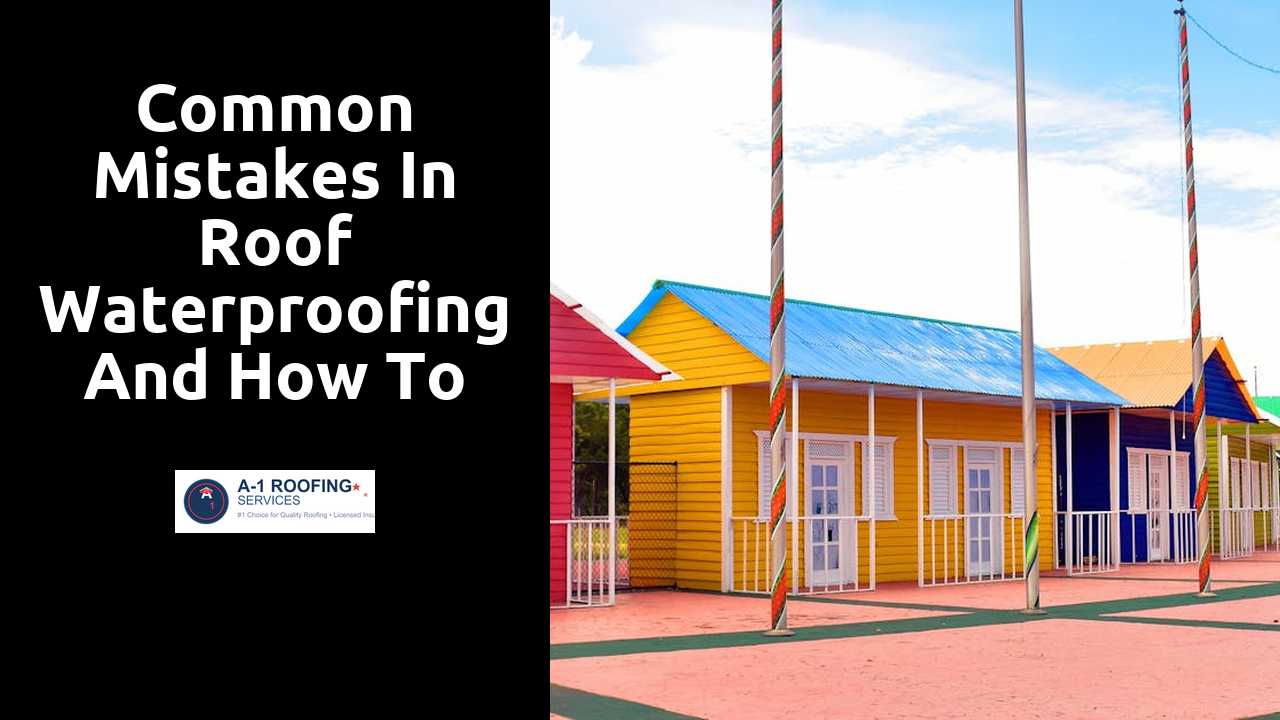
Common Mistakes in Roof Waterproofing and How to Avoid Them
Table Of Contents
Overlooking Drainage Systems
Effective roof waterproofing relies heavily on an efficient drainage system. When drainage systems are overlooked, water can accumulate and lead to various issues such as leaks, mold growth, and structural damage. Proper drainage prevents water from pooling on the roof surface, which can otherwise compromise the waterproofing membranes and materials. Ensuring that gutters, downspouts, and drains are correctly installed and functioning is paramount for any waterproofing strategy.
Regular maintenance of drainage pathways is crucial in preserving the integrity of the roofing system. Blockages from debris, such as leaves and dirt, can impede water flow and lead to overflow. This overflow not only affects the roof but can also damage the building's exterior and interior spaces. Keeping these systems clear and intact contributes significantly to reducing potential water damage and enhancing the overall lifespan of the roof.
This new blog post covers this topic in more detail.
Ensuring Proper Drainage for Effective Waterproofing
Effective waterproofing relies heavily on a well-designed drainage system. Without proper drainage, water can pool on the roof, leading to leaks and structural damage. Gutters, downspouts, and drains must be positioned strategically to direct water away from the roof and the building’s foundation. Regular inspections of these drainage components ensure they are free of debris and functional, preventing potential water accumulation that can compromise waterproofing efforts.
Additionally, slight adjustments in the roof structure can significantly enhance drainage efficiency. Ensuring a slight slope towards the drainage points facilitates the swift movement of water, reducing the risk of stagnation. Homeowners should consider consulting with professionals when designing or modifying drainage systems to guarantee effectiveness. Implementing these measures can greatly extend the life of both the roof and the overall structure.
Skipping Maintenance Checks
Regular maintenance checks are essential for any roofing system, especially when it comes to waterproofing. Many property owners tend to overlook this aspect, believing that once the waterproofing has been installed, it will remain effective indefinitely. This neglect can lead to unnoticed damage, compromising the integrity of the roof and allowing water intrusion. Scheduling periodic inspections helps identify potential issues early and ensures that any necessary repairs are made promptly.
Failing to conduct maintenance can result in costly repairs down the line. Minor issues such as small leaks can escalate into major problems if not addressed quickly. In addition, debris buildup can hinder drainage systems, leading to water pooling on the roof. Establishing a routine for maintenance checks not only prolongs the lifespan of the roofing materials but also provides peace of mind, knowing that the property is protected from water damage.
Importance of Regular Inspections for Longevity
Regular inspections serve as a critical component in maintaining the effectiveness of a roof's waterproofing system. These assessments help identify potential issues such as cracks, wear, or debris buildup that can lead to significant damage over time. By catching problems early, property owners can address them before they escalate, ultimately extending the life of both the roof and its waterproofing measures.
Establishing a routine for these inspections contributes to long-term peace of mind. Professionals can evaluate various aspects of the roofing system, ensuring that everything remains in optimal condition. This proactive approach not only saves on costly repairs but also ensures the integrity of the building is preserved, safeguarding the investment for years to come.
Ignoring Manufacturer Guidelines
Following manufacturer guidelines is essential for the success of any waterproofing project. These guidelines provide specific instructions and recommendations based on the unique characteristics of the materials used. Neglecting these details can lead to improper application techniques, reducing the effectiveness of the waterproofing system. Each product is engineered with particular requirements for optimal performance, which should be strictly adhered to during installation.
Additionally, manufacturers often include important information regarding environmental conditions and compatibility with other materials. Ignoring these recommendations can result in issues such as adhesion failure, moisture infiltration, and premature material degradation. Ensuring compliance with these guidelines not only maximizes the longevity of the waterproofing solution but also helps prevent costly repairs and replacements in the future.
Adhering to Installation Instructions for Optimal Results
Proper adherence to the installation instructions provided by manufacturers is crucial for achieving the best possible outcomes in roof waterproofing. These guidelines are specifically designed to address various aspects of the waterproofing process. This includes recommended application techniques, material compatibility, and environmental factors that can influence the performance of the roofing system. Deviating from these instructions can lead to inadequate coverage, premature failure of waterproofing materials, or even costly repairs down the line.
Each product may come with unique specifications that dictate how it should be applied in different conditions. Recognizing the importance of these details can help homeowners and contractors alike avoid premature degradation of waterproofing systems. Additionally, using the materials and tools suggested by the manufacturer ensures that the installation adheres to industry standards, thus providing a dependable barrier against water infiltration. Ultimately, a diligent approach to following these instructions not only protects the roofing structure but also enhances its overall longevity.
Related Links
Choosing the Right Waterproofing Material for Your RoofEffective Waterproofing Solutions for Residential Roofs